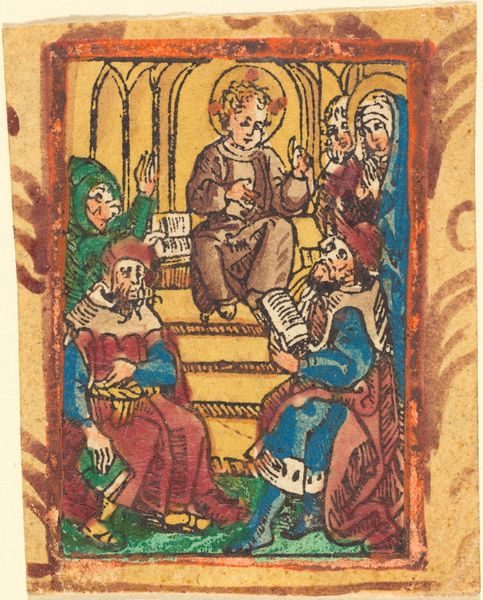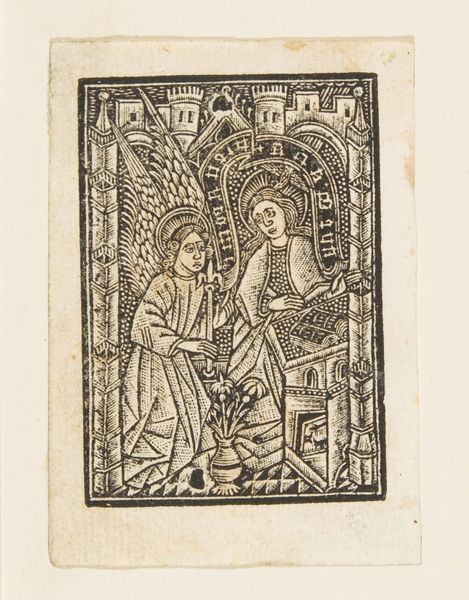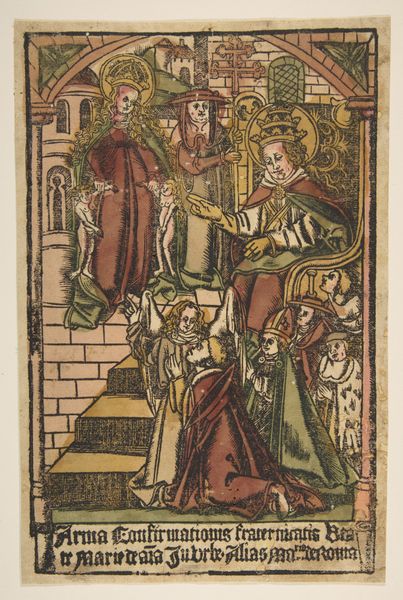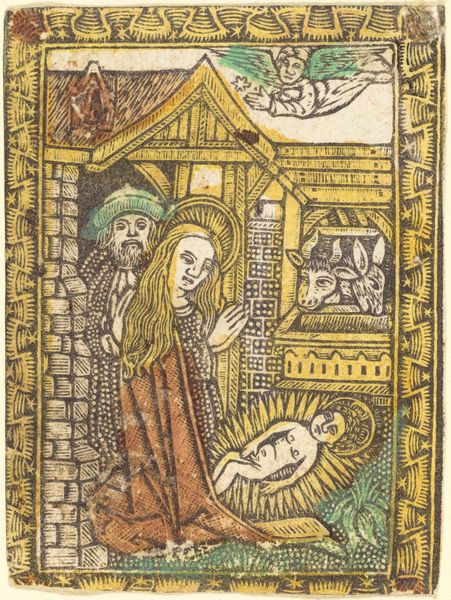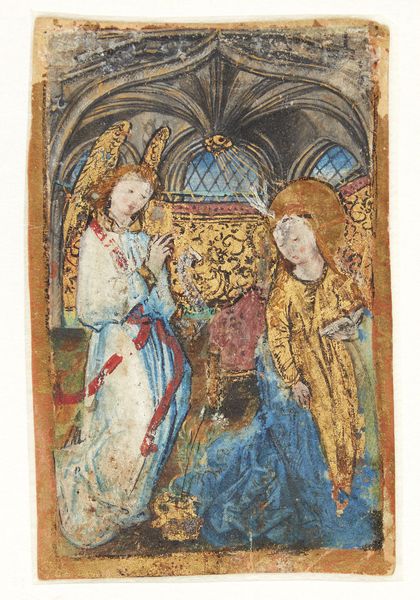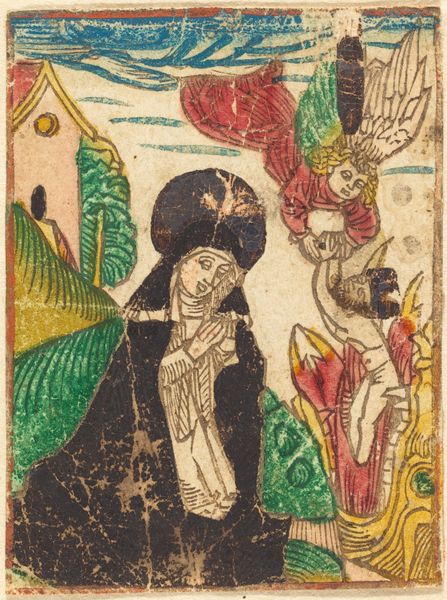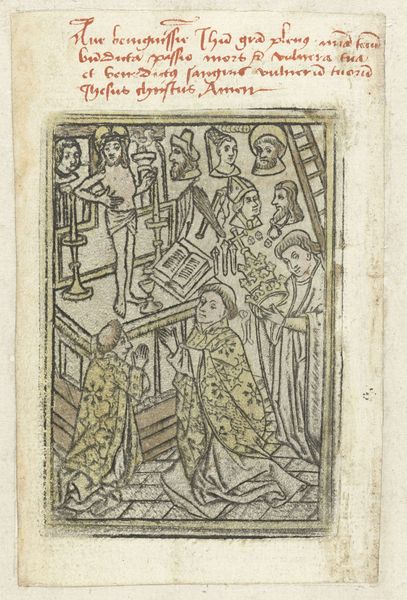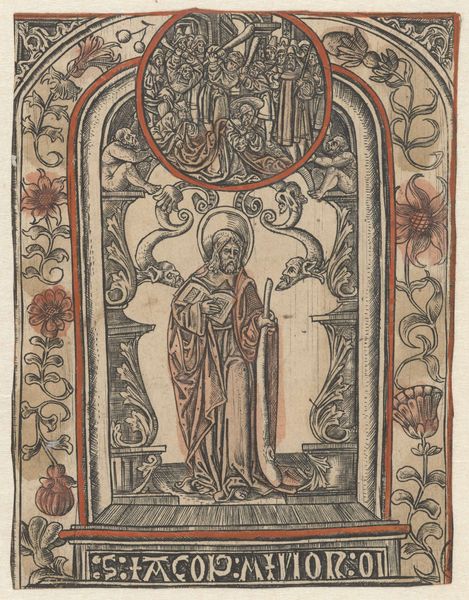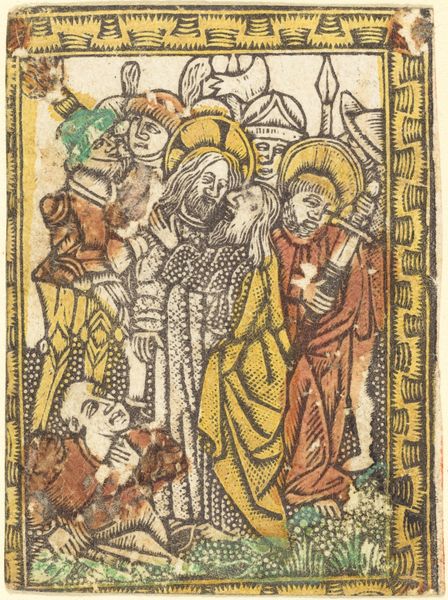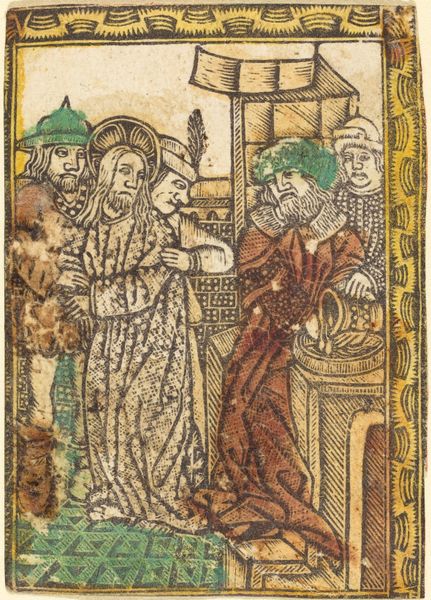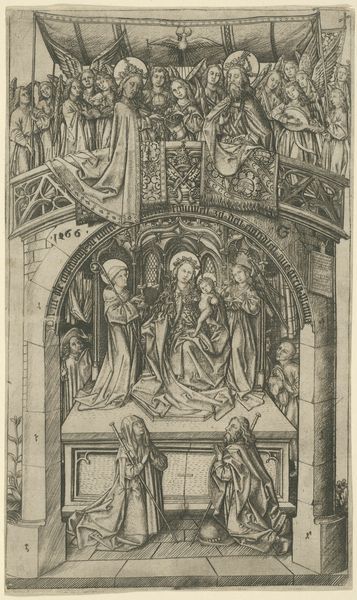
print, woodcut
#
narrative-art
# print
#
figuration
#
linocut print
#
woodcut
#
northern-renaissance
Copyright: National Gallery of Art: CC0 1.0
Curator: This is an early print of "The Adoration of the Magi," dating from about 1470 to 1480. Editor: It has such a graphic quality. Stark contrasts, very compact, almost a folksy feel despite the high-art subject matter. Curator: That subject, the Adoration, really speaks to the cultural moment. The intersection of religious faith and secular power playing out as a very visible, public narrative. Think about the performance of piety at the time and its socio-political dimensions. Editor: And the printmaking process itself is fascinating. Likely a woodcut or possibly even a linocut, if we're considering later scholarship on the medium. Look closely at the lines, the way they define form with varying thickness. What tools did they use? How was the block prepared? I’m immediately drawn to the materiality of it. Curator: The hierarchy is fascinating too. The Madonna at the apex of earthly power by virtue of maternity; the Magi representing far-reaching influence prostrating themselves before her, it all creates a really intense web of social standing, and access to power. Editor: Right, and look at how the gold leaf is rendered – that density created with repetitive marks. It almost mimics the texture of hammered metal, doesn’t it? I wonder what pigments were available to the artist at this time, and what those color choices might have communicated to their contemporary viewers. What dyes are being produced and by whom? Curator: Definitely considerations that open new lines of inquiry, thinking about access and consumption. These early prints acted as a vital medium to spread images and ideologies. It raises so many questions around visual culture and belief at a transitional time. Editor: Indeed, investigating the history of printmaking offers so many avenues for exploring not only artistic ingenuity but also how images become instruments for disseminating ideas within a society, don’t you think? It’s truly remarkable.
Comments
No comments
Be the first to comment and join the conversation on the ultimate creative platform.
